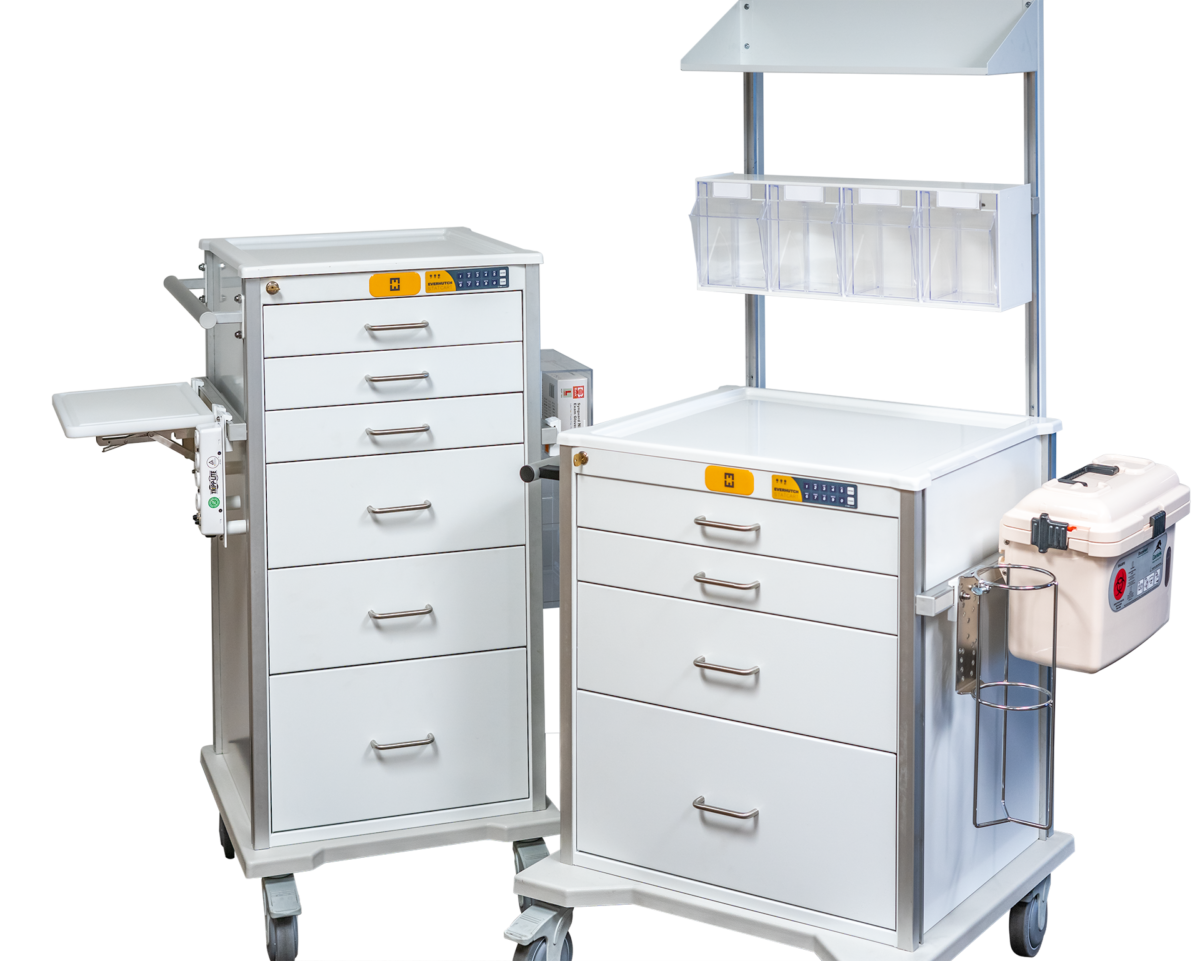Procedure carts are essential pieces of equipment in many different healthcare settings, from hospitals to doctors’ offices to care homes and research facilities, but they cannot work effectively if not organized and maintained. The items stored in the cart need to be easily accessible, but still kept securely, and regular cleaning and maintenance needs to be carried out with minimal disruption.
Checklist for each different type of procedure cart
Have a list of the items needed for a generalized cart, a crash cart, an anesthesia cart, or an infection cart, and the necessary amounts. Keeping careful records is how you ensure you stock and maintain everything you need. You should also have a checklist for regular cleaning and maintenance tasks.
Outside items
The outside of the cart is less secure than the lockable drawers and therefore can be used to store lower-risk items, such as gloves, that are less likely to be stolen. It can also be used, however, for larger items, and for those that need to be particularly accessible in an emergency, such as a defibrillator for a crash cart.
Drawer division
How you divide your drawers will depend in part on the nature of your cart and supplies, but generally, you want the more frequently used items to be near the front and items that are often used together to be kept in close proximity. Sharps, medications, and other potential hazards should be in drawers that securely lock. Trays and dividers may allow you to configure the drawers to your needs.
Labeling
One of the easiest ways to ensure that every item can immediately be identified by any user is to ensure a clear labelling system on the outside of drawers, and on internal dividers. Color coding can also be used to aid in rapid identification.
Removal of waste
Medical waste can often be harmful to humans, including drugs, used syringes, and personal protective equipment (PPE) that has been exposed to chemicals and bodily fluids. It needs to be disposed of promptly and safely for the protection of patients, staff, and any visitors. Many procedure carts have an external bin to allow for immediate waste disposal, but if not, or if items do not fit, then they should be removed from the area as quickly as possible. Bins should be emptied regularly.
Cleaning and restocking
Good hygiene is essential to any medical setting, and that means carts and other equipment need to be cleaned. This should take place regularly even when not in use, but after they have been involved in a medical procedure, it is even more important. Sometimes, just wiping down will be enough, but there should also be a regular schedule for deep cleaning when all stored items are removed and every corner is scrubbed. At the end of every day, as well as cleaning, an inventory should be taken so any items utilized can be immediately replaced.
Training and practice
To ensure good organization, cleaning, and maintenance procedures, all staff should be thoroughly trained and have regular opportunities to rehearse best practices. Your priorities and protocols should be written down and easily available.
Conclusion
Maintaining a procedure cart means knowing its contents, labeling them clearly, having a set routine for cleaning and restocking, and ensuring staff are fully trained and rehearsed on all protocols. This way, you can ensure the cart itself is in good condition, contains the correct supplies and that any waste is removed swiftly.

Comments are closed.